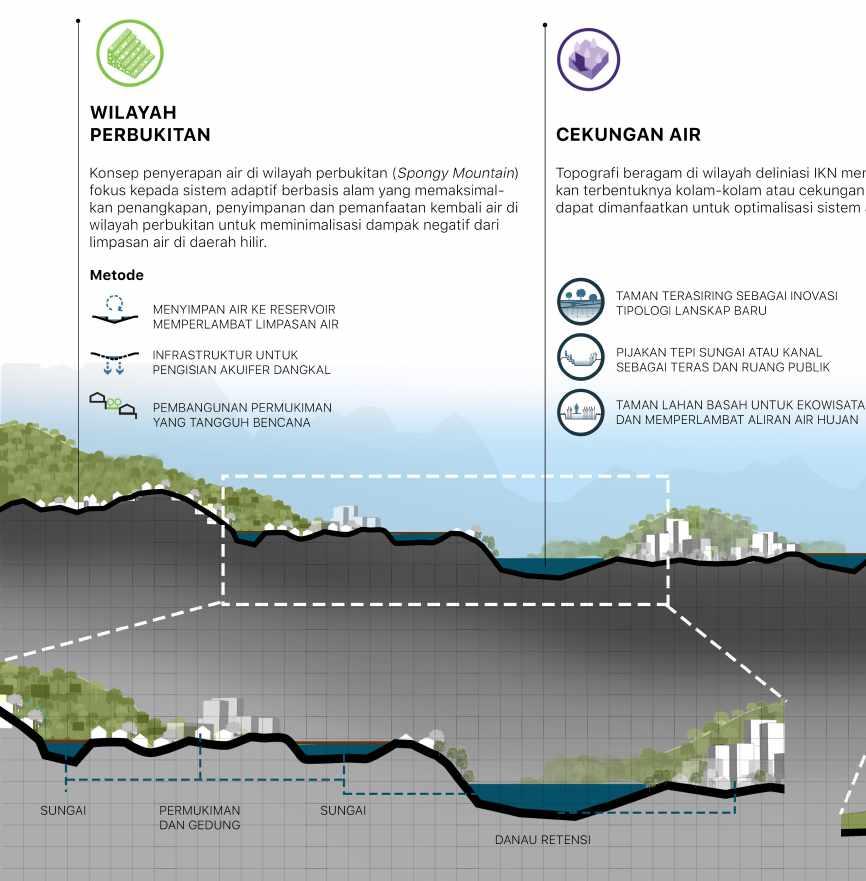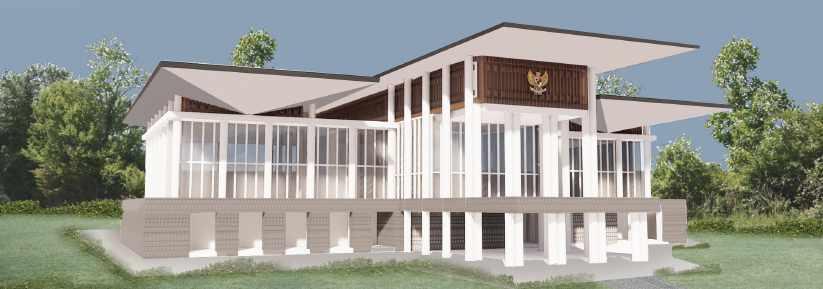
4 minute read
riet anri alam
riet anri alam.
‘in harmony with nature’
Advertisement
entry for The New Capital of Indonesia (IKN) Design Competition collaboration with Raka W. Suryandaru, Gigih Nalendra, Meilani Martini, Sudharto Hadi, and Wiwandari Handayani
Sepaku City is designed as a living and attractive human-scale metropolitan for its citizens. Sepaku also is designed as a reliable center of government with a strong regional image as the state capital. With the concept of restoration, Sepaku is built in harmony with the nature to restore the glory of Kalimantan as a tropical rain forest with high biodiversity. This compact square-shaped city with a structure that is easily managed and connected by green-blue corridors is Indonesia’s answer to the challenges of climate change and the need for sustainable development.

AVAILABILITY OF LARGE AMOUNTS OF LAND
The large area of land that can still be developed is a distinct advantage for KIPP. Besides, the location is not in a protected area or densely populated village. Therefore, this land use becomes more efficient.
SUPPORTING ENVIRONMENTAL PHYSICAL CONDITIONS
KIPP is located in an area that has ultisol, alfisol, inceptisol, and entisol soil types. Land with these types of soil can still be developed for cultivation activities when compared to peat and coal land. On the other hand, this area has another advantage because it is found in its relatively gentle contour (5-15%).
THE VARIETY OF CONNECTIVITY OPTIONS
Accessibility to KIPP can be accessed by land and sea. The sea route is a unique transportation option because of its shorter travel time and views along the river. If compared to Samboja, it doesn’t be an option because it is adjacent to the protected forest, thus limiting urban growth and potentially encroaching into the forest.
SUFFICIENT AVAILABILITY OF WATER
KIPP is passed by the river children who embrace in Balikpapan Bay. This increases the risk of flood disaster so that it needs the blue corridor engineering in the form of embung or lake retention. It can be used as a water storage during the rainy season and the dry.



GREEN-BLUE CORRIDOR
The concept of restoration is translated in the form of supply of the green and blue corridor that connected each other. The green axis is expanded so that the entire city is covered by a green network. Three retention ponds were added to increase the availability of surface water and the attractiveness of the area.
THE CO-BENEFITS OF CLIMATE CHANGE
Green-blue corridors contribute greatly to both mitigation and adaptation to climate change. These networks increase carbon stocks and reduce greenhouse gas emissions. They also increase water absorption, accelerate aquifer filling, prevent erosion, reduce the risk of floods and landslides, provide disaster evacuation space, reduce the urban heat island, and create a cooler microclimate.
PUBLIC TRANSPORTATION NETWORKS
Bus Rapid Transit is chosen because it has lower procurement, operational, and maintenance costs compared to LRT and MRT. BRT also contributes to reduce emissions through the use of clean energy such as electric fuel. Development of public transportation networks will be integrated regionally through intermodal exchanges.
TOUGH CONNECTIVITY
To create a resilient system, macro transportation does not only rely on one system but several alternatives, such as land, sea, and river routes.
LAND USE PLAN
The mixed use concept is applied to KIPP to support the creation of a compact city that integrates various types of activities in one area so as to minimize community mobility. There are several functions within one building block such as ministerial offices equipped with economic facilities, green open spaces, and health facilities. At the regional scale, the application of mixed use is more diverse. It combines work, live, and play functions.
SUSTAINABLE WATER MANAGEMENT
USING SURFACE WATER
Water management in the IKN area avoids the use of wells or groundwater. The source of raw water for the KIPP area utilizes two dams in the north, namely the Batu Lepek Dam and the Sepaku Semoi Dam. The location of the KIPP which is downstream of the river also has the potential to provide clean water sources.
MAXIMIZING THE CATCHMENT AREA
The hilly topography of the IKN area can be utilized for the management of water systems. The concept of water treatment in IKN is maximizing the catchment area in the hills and prioritizing water cycles. The function of the recharge area is maximized to slow the water runoff and store water to be processed and reused.

HILLY AREA
The concept of water absorption in hilly areas (spongy mountain) focuses on nature-based adaptation systems that maximize water capture, storage, and reuse to minimize the negative impact if water runoff in downstream areas.
WATER BASIN
The varied topography in the IKN delineation area has resulted in the formation of ponds or basins that can be used for optimization of the water systems.
DOWNTOWN
Handling water systems in downtown areas maximizes storage and slows down the rate of rainwater to relieve pressure in downstream areas.












